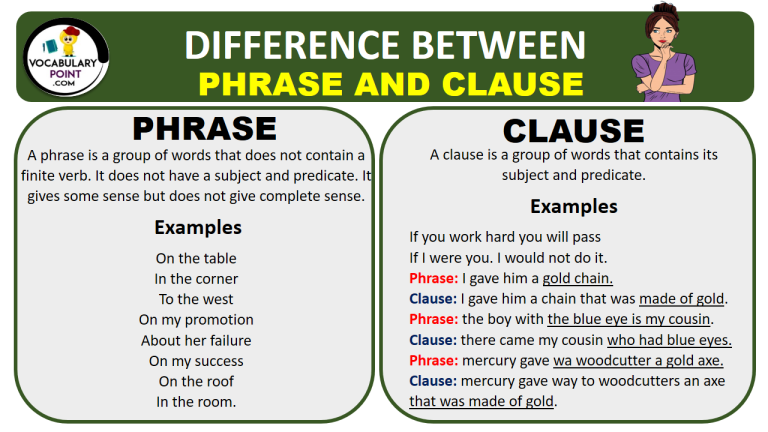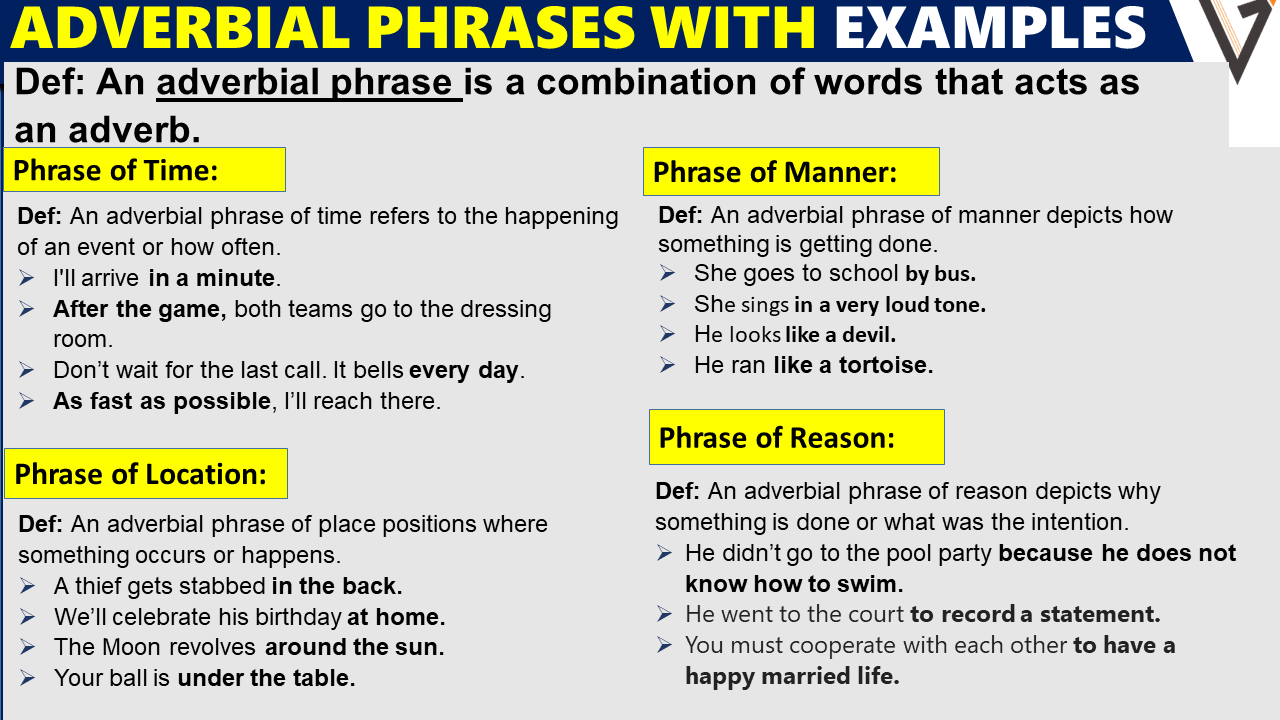Shooting games for Android with realistic controls have transformed the mobile gaming landscape, offering players an immersive experience that rivals traditional console and PC gaming. Over the years, these games have evolved significantly, showcasing advancements in graphics, gameplay mechanics, and control systems that enhance the user’s overall experience. The importance of realistic controls cannot be overstated, as they play a crucial role in determining player engagement and satisfaction.
By integrating sophisticated control schemes and haptic feedback technology, developers have made it possible for players to enjoy a level of realism that was previously unimaginable on mobile devices. This article will explore the characteristics of realistic controls, highlight top-rated shooting games that exemplify these features, and delve into innovations shaping the future of mobile gaming.
Overview of Shooting Games for Android
The evolution of shooting games on Android devices has been remarkable, reflecting advancements in technology and gaming design. Initially, mobile gaming was limited to simple 2D graphics and straightforward controls. However, as Android devices became more powerful, the genre evolved to include immersive 3D environments, detailed graphics, and complex gameplay mechanics that appeal to a wider audience.
Several shooting games have gained immense popularity due to their exceptional graphics and engaging gameplay. Titles such as “Call of Duty: Mobile,” “PUBG Mobile,” and “Fortnite” are prime examples that showcase high-quality visuals and interactive features. These games not only provide stunning graphics but also incorporate realistic scenarios that enhance player engagement. For instance, “Call of Duty: Mobile” offers various multiplayer modes, including battle royale and team deathmatch, ensuring players experience diverse gameplay styles.
Importance of Controls in Shooting Games
The significance of controls in shooting games is paramount, as they directly influence the overall gaming experience. Effective controls enable players to navigate their environment seamlessly, aim accurately, and execute actions with precision. Poor control responsiveness can lead to frustration and negatively impact gameplay.
Modern shooting games on Android have adopted advanced control schemes, often featuring customizable touch controls or adaptive layouts that cater to individual player preferences. This adaptability allows players to adjust sensitivity and layout, ensuring a more personalized and enjoyable experience. For example, games like “PUBG Mobile” and “Call of Duty: Mobile” allow players to customize their control settings, making it easier to manage complex maneuvers during intense battles.
The integration of responsive controls is essential for maintaining player immersion and ensuring competitive fairness in shooting games.
In conclusion, as the landscape of mobile gaming continues to change, the focus on enhancing control schemes remains crucial. Players benefit significantly from well-designed controls that enhance their ability to engage in fast-paced shooting action while enjoying visually stunning environments.
Characteristics of Realistic Controls
In the realm of shooting games for Android, the implementation of realistic controls plays a pivotal role in shaping the overall gaming experience. Realistic controls are designed to mimic the actions and responses of real-world firearms, allowing players to engage with the game in a more immersive manner. These controls not only enhance the gameplay but also contribute significantly to the player’s performance and enjoyment.
The features that define realistic controls encompass a variety of elements, including sensitivity adjustments, customizable layouts, and the integration of advanced control schemes. Each of these features is critical in ensuring that players can interact with their environment in a way that feels authentic and intuitive. The precision with which players can aim, shoot, and navigate their virtual surroundings directly correlates to the satisfaction derived from each gaming session.
Control Schemes and Their Impact on Performance
Different control schemes play a crucial role in determining player performance in shooting games. The choice between touch controls, virtual joysticks, and tilt mechanics can drastically affect how players interact with the game.
– Touch Controls: This method allows players to tap and swipe on the screen to perform actions. While it offers flexibility, it may lack precision, especially in high-stakes scenarios requiring quick reflexes.
– Virtual Joysticks: Providing a more conventional gaming experience, these joysticks allow for better control over movement and aiming. Players often find this scheme more suited for precise shooting, as it mimics the feel of a traditional game controller.
– Tilt Mechanics: Utilizing the device’s motion sensors, tilt controls can create an engaging experience for players. However, they may not offer the same level of accuracy as touch or joystick controls, which can impact performance in competitive situations.
The effectiveness of each control scheme varies based on individual player preferences and gaming styles. A player who excels with virtual joysticks may struggle with touch controls, affecting their overall performance in the game.
Role of Haptic Feedback in Immersion
Haptic feedback serves as an essential component in creating a more immersive experience in shooting games. This technology enhances the realism of gameplay by providing tactile responses that correspond to in-game actions.
The inclusion of haptic feedback can significantly augment the player’s sense of immersion. For instance, the sensation of recoil when firing a weapon or the vibration felt during an explosion adds depth to the gaming experience. Players are more likely to feel connected to the game when their physical actions are mirrored by responsive feedback.
Benefits of haptic feedback include:
– Enhanced Engagement: Players are drawn deeper into the game world, making every shot fired feel impactful and rewarding.
– Improved Reaction Times: The immediate feedback can help players adjust their strategies dynamically, responding to in-game events with greater speed and accuracy.
– Realistic Simulation: By mimicking the physical sensations associated with shooting, haptic feedback effectively bridges the gap between virtual and real-world experiences.
In conclusion, the characteristics of realistic controls in shooting games—ranging from various control schemes to the impact of haptic feedback—are integral to enhancing player engagement and performance. These elements combine to create a dynamic and engaging atmosphere, ensuring that players are not only challenged but also thoroughly entertained.
Top Shooting Games with Realistic Controls

In the realm of mobile gaming, shooting games have evolved dramatically, especially in terms of control mechanics that aim to provide players with a more immersive experience. Realistic controls enhance gameplay, allowing for precision and responsiveness that mimics real-world situations. This section will explore some of the top-rated shooting games known for their exceptional control systems, highlighting the mechanics that set them apart.
List of Top Shooting Games with Realistic Controls
The following games are recognized not only for their engaging gameplay but also for their realistic control schemes that contribute to an authentic shooting experience.
-
Call of Duty: Mobile
“Precision and control are paramount in warfare.”
Call of Duty: Mobile boasts a sophisticated control layout that allows players to customize touch sensitivity and button placements. This flexibility enables gamers to adapt the controls to their preferences, enhancing their overall performance. The game includes features like aim assist and various firing modes, accommodating both casual players and competitive enthusiasts.
-
PUBG Mobile
“Survival is a skill honed by realism.”
PUBG Mobile presents a control scheme that simulates real-life shooting dynamics, including bullet drop and recoil management. Players can fine-tune their control settings, such as adjusting the sensitivity for aiming and shooting, which is crucial for achieving accuracy in high-stakes situations. The interface design facilitates quick access to inventory and weapon selection, making it easier to react swiftly during gameplay.
-
Critical Ops
“Skill and strategy are essential for victory.”
Critical Ops features an intuitive control system that emphasizes quick reflexes and precise aiming. The game incorporates a virtual joystick for movement and separate buttons for shooting and throwing grenades. The controls are highly responsive, which is critical for competitive matches where every millisecond counts. The user interface is clean and straightforward, allowing players to focus on the action without unnecessary distractions.
-
Modern Combat 5: Blackout
“The battlefield is where strategy meets instinct.”
Modern Combat 5: Blackout offers a robust control scheme that includes customizable touch controls. Players can adjust the layout to suit their playstyle, whether they prefer traditional shooting mechanics or a more dynamic approach. The game also features various modes that challenge players to master their skills, supported by a user-friendly interface that provides vital information at a glance without overwhelming the player.
-
Fortnite
“Build, battle, and survive with precision.”
Fortnite’s control system is designed for both shooting and building mechanics, offering a unique blend of action and strategy. The game provides a highly customizable interface, allowing players to modify their control layouts and sensitivities. The touch controls are responsive, supporting quick building and aiming, which is essential in competitive matches. The design ensures that players can engage with both shooting and construction seamlessly.
Each of these games showcases different approaches to realistic controls, enhancing player immersion and skill development. The user interface designs are tailored to support realism, providing essential information and tools while ensuring that players maintain focus on their objectives. The combination of intuitive controls and engaging gameplay mechanics creates a compelling shooting experience on Android devices.
User Experience and Realism in Control Design
In the realm of shooting games for Android, the design of controls plays a pivotal role in shaping the user experience. Intuitive controls not only enhance gameplay but also significantly contribute to user satisfaction. Gamers often seek an engaging experience where the controls feel natural, allowing them to focus on strategy and skill rather than struggling with complex input methods.
The significance of intuitive controls cannot be overstated, as they serve as the primary interface through which players interact with the game world. A well-designed control scheme streamlines actions such as aiming, shooting, and movement, directly impacting the enjoyment and immersion of the player. A study conducted by the Digital Games Research Association (DGRA) indicated that players who rated the controls as “intuitive” reported a 30% higher enjoyment level compared to those with less satisfactory control experiences.
Player Feedback on Control Preference
Analyzing player feedback reveals a strong preference for controls that blend realism with accessibility. Many players express that while they enjoy the immersive experience of realistic controls, there is a clear demand for designs that do not compromise playability. Feedback collected from various gaming forums and surveys highlights several key elements that players appreciate:
- Fluidity of Movement: Players favor controls that allow for smooth and responsive character movements, enhancing the overall gaming experience.
- Precision Aiming: A control system that offers accurate aim adjustments is crucial, as it directly impacts gameplay success, especially in competitive environments.
- Customization Options: The ability to modify control schemes according to personal preference is highly valued, as it accommodates different play styles and enhances comfort.
The balance between realism and accessibility further complicates control design. Developers strive to create an experience that feels authentic; however, overly complex mechanisms can alienate casual gamers. As such, finding a middle ground where controls are realistic yet easy to master is essential for maximizing user engagement.
Balancing Realism and Accessibility in Control Design
The design of shooting game controls must navigate the delicate balance between providing a realistic experience and ensuring accessibility for all players. Research suggests that players are more likely to enjoy a game that allows them to engage without excessive barriers to entry. Key considerations in this balance include:
- Adaptive Difficulty Levels: Implementing tiered difficulty settings that adjust control sensitivity and complexity can cater to both novice and experienced players.
- Tactile Feedback: Incorporating haptic feedback enhances the realism of shooting mechanics, making players feel every shot they take, which adds to immersion without complicating controls.
- Contextual Controls: Intelligent design can enable controls that change based on in-game context, simplifying user inputs during critical moments.
In conclusion, the combination of player feedback and ongoing advancements in control design illustrates the importance of creating intuitive, realistic controls in shooting games. Such designs not only improve user satisfaction but also ensure a broader appeal, enhancing the overall gaming landscape for Android users.
Innovations in Control Technology

The landscape of mobile gaming, particularly in shooting games, has undergone significant transformations with the advent of new control technologies. These innovations have significantly enhanced gameplay experiences, making them more immersive and engaging for players. By integrating advanced technologies such as motion sensors, touch sensitivity, and virtual reality, developers are pushing the boundaries of how shooting games are played on Android devices.
The integration of motion sensors and touch sensitivity into gameplay has revolutionized how players interact with shooting games. Developers are now utilizing sophisticated sensor technologies to create responsive and intuitive controls that align closely with player movements. This fusion of hardware and software allows for a more natural and fluid gaming experience, where a player’s physical actions are mirrored in the game environment.
Motion Sensors and Touch Sensitivity
The incorporation of motion sensors and touch sensitivity enhances the overall control experience in shooting games. These technologies provide players with the ability to aim, shoot, and navigate in a way that feels more organic. Some critical aspects include:
- Gyroscope and Accelerometer: Most modern smartphones are equipped with gyroscopes and accelerometers that detect physical movement and orientation. These sensors allow players to tilt or turn their devices to aim, making the gameplay more engaging and responsive.
- Touch Sensitivity Features: Advanced touchscreens can detect different levels of pressure, allowing for nuanced controls like varying fire rates or alternate actions based on how hard a player presses the screen. This adds depth to the shooting mechanics.
- Gestural Controls: Many games now incorporate gesture-based controls, enabling players to perform complex actions, such as dodging or reloading, with simple swipes or taps, enhancing the overall fluidity of gameplay.
Virtual Reality Influence on Control Schemes
Virtual reality (VR) has emerged as a transformative force in mobile gaming, especially in shooting games. The introduction of VR technologies has led to the development of control schemes that provide a deeper level of immersion. Key elements include:
- 360-Degree Interaction: VR allows players to look around in a fully 3D environment, transforming how they perceive and engage with the game world. Players can physically turn their heads to aim or locate enemies, enhancing the tactical aspects of gameplay.
- Hand Tracking: Advanced VR systems equipped with hand-tracking technology enable players to use their hands for aiming and shooting, offering a more intuitive and lifelike experience compared to traditional touch controls.
- Environmental Feedback: VR systems often include haptic feedback mechanisms that simulate the feeling of gunfire or explosions, further immersing players in the action and enhancing their emotional investment in the gameplay.
Innovations in control technology not only elevate the thrill of gameplay but also foster a deeper connection between players and their virtual experiences.
Customization Options for Controls
Customization options for controls in shooting games on Android significantly enhance the player’s experience by allowing them to tailor their gameplay to their personal preferences. By adjusting these settings, players can create a control scheme that aligns with their unique gaming style, leading to improved performance and satisfaction.
There are numerous customization options available to players, ranging from sensitivity adjustments to button remapping. Each player can find a configuration that suits their gameplay and comfort level. This level of personalization not only fosters a more engaging gaming experience but also enables players to maximize their effectiveness in competitive environments.
Control Sensitivity Adjustments
One of the fundamental aspects of control customization is adjusting sensitivity levels. This feature allows players to fine-tune how responsive their controls are to their movements. The importance of sensitivity settings cannot be overstated, as they can drastically affect accuracy and reaction time.
- Low Sensitivity: Ideal for players who prefer precision aiming, especially in sniper roles.
- Medium Sensitivity: A balanced option that allows for a mix of accuracy and mobility.
- High Sensitivity: Suitable for fast-paced gameplay, enabling quicker turns and reactions.
Button Remapping Options
Button remapping is another crucial feature that provides players with the ability to change the layout of their controls. This flexibility can enhance comfort during gameplay, especially for those who may find default settings cumbersome.
- Action Button Placement: Players can reposition essential buttons such as fire, jump, and reload to locations that are more accessible during intense action.
- Gesture Controls: For players who prefer touch-based interactions, customizing gestures can offer a more intuitive experience.
Custom HUD Settings, Shooting games for Android with realistic controls
A customizable heads-up display (HUD) can significantly impact a player’s situational awareness and overall gaming experience. By adjusting the HUD, players can ensure that critical information is readily visible without distracting from gameplay.
- Size and Opacity: Players can alter the size and transparency of HUD elements such as health bars, ammo counts, and minimaps for better visibility.
- Positioning: Rearranging HUD elements can help players keep their focus on the action without obstruction.
Impact of Customization on Gameplay Performance
The ability to customize controls has a profound impact on gameplay performance, as it allows players to adapt their settings to suit their strengths. Players who take advantage of these features often report higher satisfaction levels during gameplay, as they feel more in control and capable of executing their strategies effectively.
“A well-customized control scheme can be the difference between victory and defeat in competitive settings.”
Customization ultimately leads to a more enjoyable and immersive gaming experience, fostering a deeper connection to the game and its mechanics.
Future Trends in Shooting Games Controls: Shooting Games For Android With Realistic Controls

The evolution of shooting games on Android is poised to witness significant advancements, particularly in control designs. As technology progresses, players can anticipate enhanced experiences that not only improve gameplay but also cater to individual preferences. The incorporation of innovative technologies such as artificial intelligence (AI) and cross-platform capabilities will play pivotal roles in shaping the future landscape of shooting game controls.
AI and Personalization in Control Setups
The integration of artificial intelligence in shooting games is expected to revolutionize how players interact with game controls. AI can analyze player behaviors, preferences, and performance to create personalized control setups that optimize gameplay.
For instance, AI algorithms can adapt the sensitivity of touch controls based on a player’s skill level, ensuring that both novice and experienced gamers have an enjoyable experience. Furthermore, AI can suggest control configurations that align with a player’s particular gaming style, thereby enhancing overall user satisfaction.
The potential for AI-driven personalization includes:
- Dynamic control adjustments during gameplay to match player responses.
- Feedback mechanisms that learn from player errors and successes to refine control settings.
- Customizable profiles that automatically adjust controls for different game modes or genres.
Implications of Cross-Platform Play on Control Standardization
The increasing popularity of cross-platform play is leading to a push for standardization in control mechanisms across various devices. As players engage with shooting games on both mobile and console platforms, the need for consistent control schemes becomes paramount.
Standardization can simplify the transition between devices, allowing players to seamlessly move from an Android device to a console without having to relearn controls. This trend is essential for fostering a unified gaming community and ensuring fair play in competitive environments.
Key points regarding the implications of cross-platform control standardization include:
- Establishment of universal control layouts that can be easily adapted across different platforms.
- Enhanced player accessibility by minimizing the learning curve associated with multiple control schemes.
- Increased competitiveness in online play, as players are better equipped to compete regardless of their chosen platform.
“The future of shooting games controls lies in the balance between personalization and standardization, creating an inclusive and adaptable gaming environment.”
Community Feedback and Development

The integration of community feedback into the development process of shooting games is essential for refining control mechanics and enhancing overall player experience. Players are often the best source of insights regarding what works and what needs improvement, particularly when it comes to realistic controls. Engaging with the community not only helps developers understand player preferences but also fosters a sense of ownership and involvement among players.
Community forums serve as a valuable platform where players discuss their experiences, preferences, and challenges related to controls. Common themes arise from these discussions, which can guide developers in iterating and refining control systems. Issues such as sensitivity adjustments, layout preferences, and feedback response times frequently emerge in these conversations.
Insights from Community Forums
Players actively share their experiences and preferences regarding control settings in various shooting games. The insights garnered from community forums highlight key areas of interest and concern. Some prevalent topics include:
- Sensitivity Settings: Players often discuss the need for customizable sensitivity options to suit different play styles, emphasizing the desire for greater precision, especially in competitive environments.
- Control Layout: Many players share suggestions for alternative control layouts that may improve accessibility and comfort, catering to a wider range of player preferences and hand sizes.
- Response Time: Feedback regarding the responsiveness of touch controls is common, with players seeking more immediate feedback to enhance their gameplay experience.
Developers can harness these insights by organizing strategies to actively gather player feedback on controls.
Strategies for Gathering Player Feedback
Implementing effective strategies for collecting feedback can significantly enhance the development process. The following approaches can facilitate meaningful player engagement:
- Surveys and Polls: Regularly distributing surveys that focus specifically on control preferences allows developers to gather targeted feedback. These tools can help identify common issues and desired features.
- Beta Testing Programs: Inviting players to participate in beta testing provides direct insights into control mechanics in a real-world context. This allows developers to observe player interactions and gather immediate feedback.
- Community Events: Organizing community events, such as tournaments or Q&A sessions, fosters engagement and provides developers with direct access to player experiences and suggestions.
Community-driven updates based on player feedback can lead to significant improvements in control mechanics.
Community-Driven Updates
The impact of community-driven updates is evident in many successful shooting games. Developers who prioritize player feedback tend to release updates that align closely with community needs. Notable examples include:
- Dynamic Adjustments: Games that have implemented dynamic adjustments to control sensitivity based on community feedback often see increased player satisfaction and retention rates.
- Control Customization Features: The inclusion of robust control customization tools, driven by community input, has led to enhanced gameplay experiences, allowing players to tailor controls to their unique preferences.
- Ongoing Support: Games that continuously adapt and improve their controls based on player feedback often maintain a loyal player base, demonstrating the value of engaging with the community.
Incorporating community feedback into the development process not only enhances control mechanics but also fosters a vibrant and engaged gaming community that feels valued and heard.
Last Point
In summary, the realm of shooting games for Android with realistic controls is continually advancing, marked by innovations that enhance player engagement and satisfaction. As technology evolves, so do the possibilities for control customization and adaptability, ensuring that players can enjoy a tailored gaming experience. By understanding the dynamics of control designs and player preferences, developers can create even more immersive and enjoyable shooting games in the future.
FAQ Compilation
What are realistic controls in shooting games?
Realistic controls refer to game mechanics that closely mimic real-life actions, enhancing player immersion through intuitive gameplay and responsive feedback.
How do haptic feedback features improve gameplay?
Haptic feedback provides tactile responses to player actions, making movements and impacts feel more authentic, thus increasing overall engagement in the game.
Can I customize the controls in these games?
Yes, many shooting games for Android offer extensive customization options, allowing players to adjust control settings to suit their individual gaming styles.
Are there specific benchmarks for evaluating control realism?
Control realism is often evaluated based on responsiveness, accuracy, and the overall intuitiveness of the control scheme, which can significantly impact gameplay experience.
What future trends might we see in shooting game controls?
Future trends may include further integration of AI for personalized control setups, advancements in VR technology, and enhanced cross-platform play experiences.